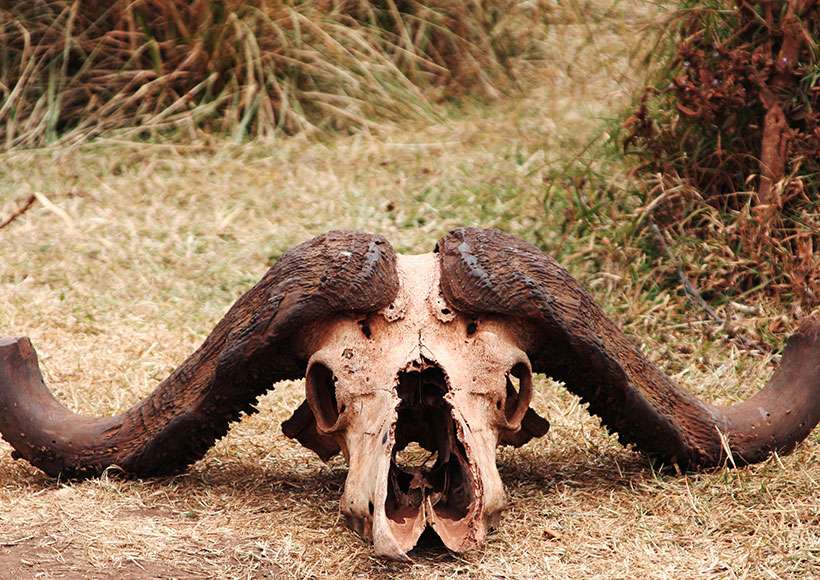Sleepwalking to Extinction
2.1 January 2017
There is currently great turmoil in international affairs due to momentous events such as Brexit in the UK and the election of Donald Trump in the USA. The forecasts of potential catastrophic consequences resulting from such upheavals are causing people a great deal of anxiety.
Yet we need to take time to step aside from the hype of contemporary politics and remind ourselves of more fundamental concerns. The potential collapse of economies, or even of nation states, is as nothing compared to the real and ongoing demise of the Earth’s biosphere.
For it’s a hard fact that humanity, in its ignorance and hubris, is irrevocably destroying life on this Earth.
Everything is interconnected and all our actions have consequences. As individuals and as a society we need to become aware of the real impact of our activities. In our pursuit of wealth, power and progress the juggernaut that is Western Civilization is racing out of control on its road of death and destruction.
What is required is a dramatic change to the paradigm through which we perceive, think and act. What is required is a profound shift in society, its dependence on fossil fuels, its economic dogmas and banking systems. We need to abandon the mantra of “short term gains at the expense of people and planet”1 because…
“Very soon…if we do nothing and all systems, ecological and human made, will implode and we become mere spectators of our own destruction.”1

Mass Extinction #6
2.2 January 2017
When I was a child in the 1950s the Earth was full of life. Gorillas dwelt in their mountain forests, and colourful Parrots flew in Amazonian canopies Now, within my life-time, I witness that life ebbing away and I am filled with great sadness.
It is natural that species will become extinct and the normal rate of extinctions is 100 to 1000 species each century. The problem is that the current rate of extinction of just birds and mammals is 100 to 1000 times that background rate. Mass extinctions are defined as times when the Earth loses more than three-quarters of its species in a geologically short interval. This has happened only five times in the past 540 million years. The last, most well-known event, was some 65 million years ago which witnessed the end of the Dinosaurs.
“Biologists now suggest that a sixth mass extinction may be under way”1
This sixth mass extinction is mostly due to human activities. There are four main causes:
Over-exploitation by hunting was probably the first major cause of extinction and mankind continues to over-harvest the natural world. For example excessive fishing caused the collapse of the cod fishery off Newfoundland to the extent that in 1992 Canada imposed an indefinite moratorium on fishing on the Grand Banks. Fishing in this once abundant area has never recommenced…. the cod never recovered.
Habitat depletion is probably the most powerful cause of extinction. Most species have a physiology adapted to a particular environment. If they lose their specific habitat the species dies.
One hundred years ago there were an estimated 315,000 Orang-utans in Asia. Today only a few biologically viable populations remain. In 2007 it was estimated that only 54,000 survive in Borneo and 6,600 in Sumatra. This collapse of population was caused by a reduction in habitat due to logging and forest fires.
Pollution of land, water and air by the introduction of lethal toxins, unintentionally or intentionally, can kill many animals and plants:
“Thousands of dead fish floating along … a river in Hubei Province in …China were killed by pollutants emitted by a local chemical plant.”2
Invasive species have been transported by mankind around the world. Over the last century Red Squirrel populations in Britain have collapsed and fewer than 140,000 now remain. This is often ascribed to the introduction of the Grey Squirrel from North America in 1876.
These four factors acting individually, or in combination, have already driven species to extinction and threaten the survival of many others. More recently another cause has been identified.
Climate Change due to man-made emissions of CO2 and other greenhouse gases is predicted as a further threat of extinctions:
“Approximately 20 to 30% of plant and animal species…are likely to be at increased risk of extinction if increases in global average temperature exceed 1.5 to 2.5°C”3
Global temperatures are expected to increase between 1.9 and 3.0°C.
Such rises will mean that many species will find themselves where the environment is no longer suited to their survival
Coral reefs around the world have been severely damaged by unusually warm ocean temperatures.4
Coral reefs are important for biodiversity providing a home to over 25% of all marine life. However, when the ocean warms, the oxygen content reduces, and corals become ‘bleached’…that is they die. At present rate of destruction most of the world’s coral reefs could be killed within our lifetime.
Such ecocide continues on a global scale.The list of endangered species is alarmingly long. The International Union for the Conservation of Nature estimates that the following are in imminent risk of extinction.
“41% of all amphibians, 25% of all mammals, 13% of all birds”5
A great deal of evidence tells us that the pace of extinctions is increasing. The stark conclusion is that life on Earth is in trouble!
We cannot just stand-by and let the life we share with this Earth pass away…forever. We all need to recognize the intrinsic value of the web of life and perceive that we are an integral part of it. We all need to change the way we live and consume. We all need to act to conserve biodiversity…and quickly!
“The one process now going on that will take millions of years to correct is loss of genetic and species diversity…this is the folly our descendants are least likely to forgive us.”7


